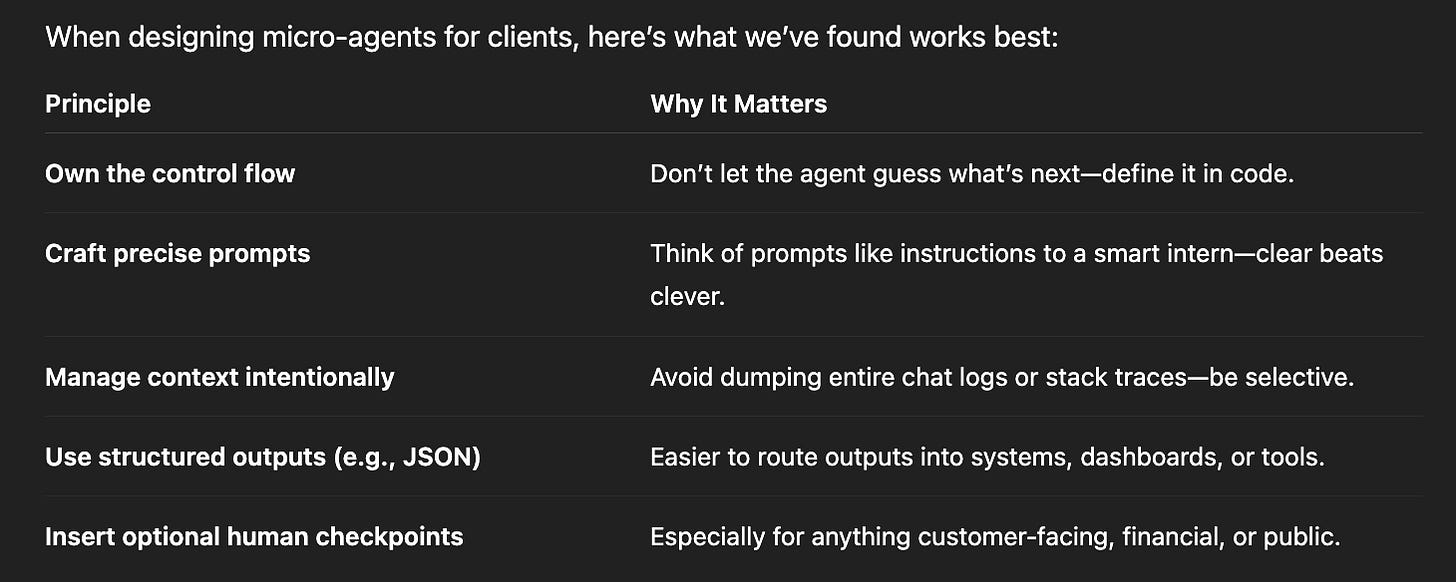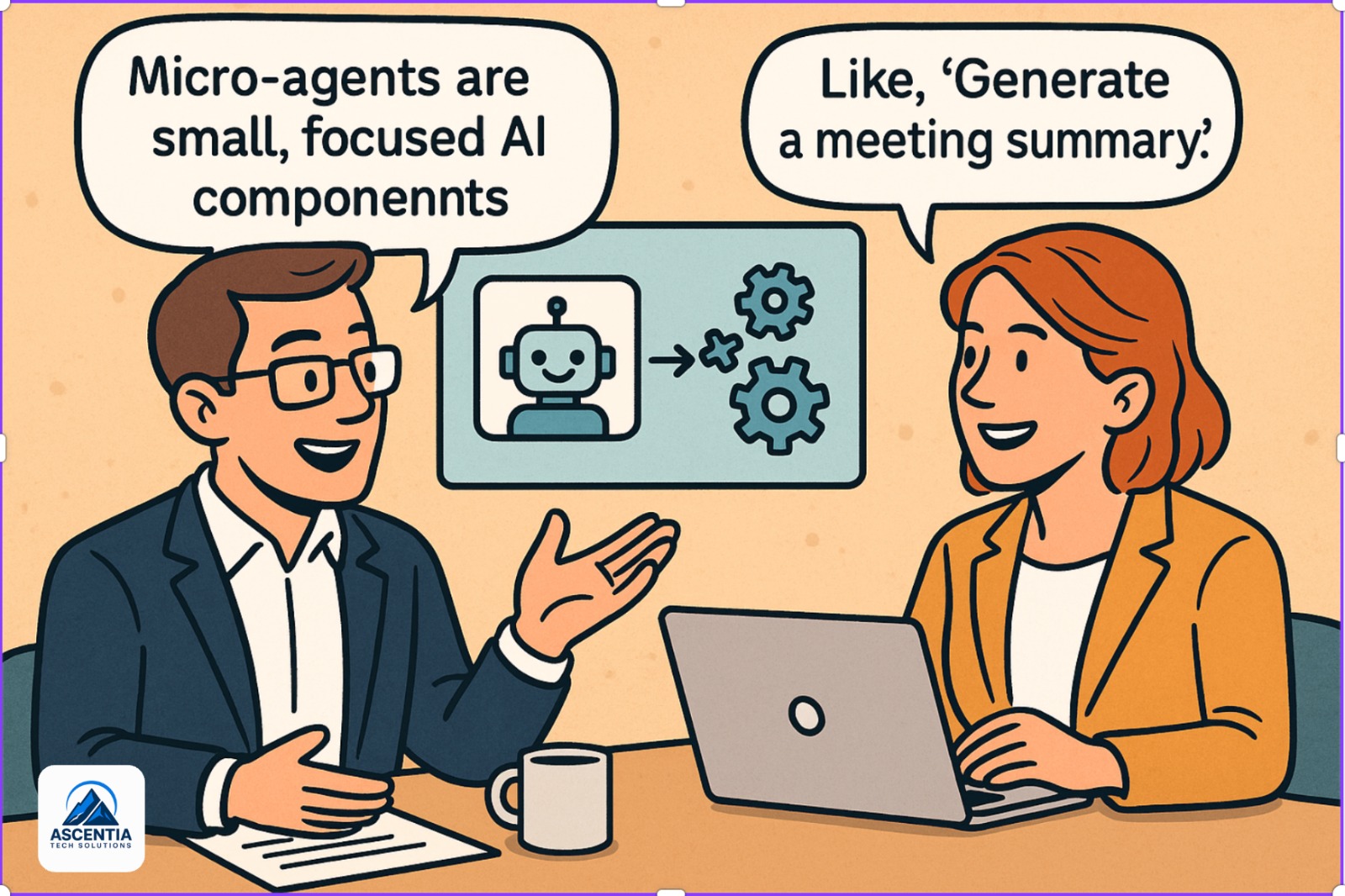Micro-agents are changing the way teams use AI—not by doing more, but by doing less, better. AI agents are everywhere—but building the right kind of agent is what separates a stalled pilot from a scalable solution.
If you’ve ever built an AI-powered tool, you may have hit what we call the 70–80% wall: it works well enough to demo, but scaling it beyond that becomes a rabbit hole of debugging, bloated prompts, and unpredictable results.
At Ascentia, we believe the way forward isn’t building bigger agents. It’s building smaller, smarter ones—what we call micro-agents.
🚦 What’s the Problem with Big, General-Purpose Agents?
Many teams try to create all-in-one agents that can handle anything—from generating reports to making decisions. But more often than not, these agents:
- Become too complex to maintain
- Lose reliability over time
- Require frequent human intervention anyway
And sometimes, the job the agent is trying to solve could have been done with a simple script in 5 minutes.
The result? More overhead, more friction, and slower delivery.
🤖 What Are Micro-Agents?
Micro-agents are small, focused AI components designed to perform a narrow task exceptionally well—usually in 3 to 10 steps. Instead of building a monolithic AI agent that tries to do it all, you break up the workflow into clear, manageable parts where each micro-agent handles one specific piece.
Think:
- “Generate a meeting summary from this transcript”
- “Suggest 3 action steps from this customer complaint”
- “Format and send follow-up emails to event attendees”
Each task stays small, testable, and flexible.
💡 Why Micro-Agents Win
Here’s what makes micro-agents powerful—and why we help our clients implement them:
1. Fewer Surprises, Better Results
By limiting scope, you reduce the risk of unexpected behavior. Micro-agents operate within a tight feedback loop, so errors are easier to trace, test, and fix.
2. Works with Existing Tools
Micro-agents don’t require overhauling your tech stack. They integrate neatly into existing workflows, backends, and APIs, handling only what they’re designed to do.
3. Human-in-the-Loop Ready
Want a final check before something goes out? You can easily insert approval steps before a micro-agent takes action—like emailing, publishing, or processing data.
4. State Management Made Simple
Micro-agents are typically stateless—meaning you control the execution state externally. That means easier debugging, faster restarts, and better audit logs.
🧩 Real-World Examples

🛠️ Best Practices for Building Micro-Agents

🚀 Takeaway
The smartest AI systems aren’t the biggest—they’re the most focused.
By designing small, reliable micro-agents that serve one purpose at a time, your organization can:
- Move faster
- Avoid unnecessary complexity
- Stay in control of your workflows
- Scale automation without losing transparency
Whether you’re coordinating events, streamlining reports, or improving response times, micro-agents help you do more—with less.
🔗 Let’s Talk
If your team is exploring how to integrate AI without overbuilding or overcomplicating, we’d love to help.
📅 Book a free consult to explore where micro-agents might save you hours each week.
Next up:
👉 Coming Soon – Right Tool, Right Job: When to Use Code, Not an Agent
Ascentia Tech Solutions helps organizations build smart, scalable AI systems—without losing control of the process. Our team specializes in creating practical, people-first automation using the latest in large language models.

